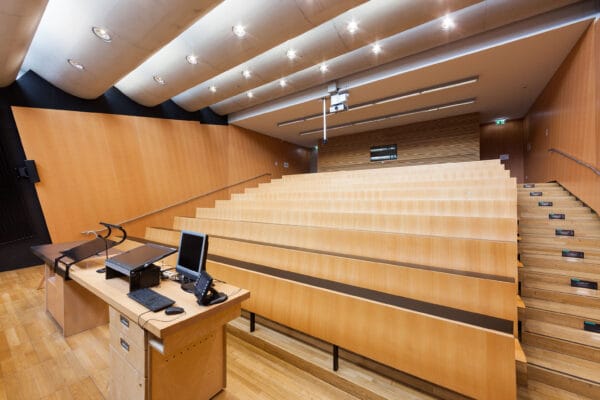
NAME:
SOWI - HS 2
BUILDING:
SOWI
FLOOR:
0
TYPE:
Lecture Hall
CAPACITY:
80
ACCESS:
Only Participants
EQUIPMENT:
Beamer, PC, WLAN (Eduroam), Overhead, Flipchart, Blackboard, Sound System, Handicapped Accessible, Light Installation
Water security in the Peruvian Andean region is increasingly threatened by climate change, glacier retreats, and anthropogenic influences. This study focuses on advancing water security through the implementation of the hydrological instrumentation and monitoring systems of two contrasting glacial-fed catchments – Qasqara (Upper Amazon drainage side in Cusco) and Yuracmayo (Upper Pacific drainage side in Lima), both based on local communities needs and requirements to establish a foundational understanding of their hydrological dynamics and the relevance of monitoring towards an effective water resource management strategies. By deploying low-cost hydrological sensors and collecting a high temporal resolution database of streamflow and precipitation, this research formulates hydrological conditions based on hydrological modelling and enhances understanding of their water storage and regulation capacities. Qasqara, located in the upper Vilcanota – Urubamba river basin, features high-altitude lagoons and wetlands fed retreating glaciers, acting as natural regulators of streamflows. These ecosystems could reduce peak discharge by 77 – 87% during extreme events, proving their flood mitigation and water storage capacities. In contrast, Yuracmayo, in the upper Rimac River basin within the Pacific basin, corresponds to one of the most important water reservoirs supplying Lima, Peru’s capital and largest city. Despite increased precipitation, inflows into the Yuracmayo reservoir fed by a nearly extinct glacier, have significantly declined, accompanied by a 39% loss in wetland coverage between 2016 and 2024, raising concerns about long-term water availability. While Qasqara Lagoons act as buffers, Yuracmayo’s bofedals are threatened, putting their regulatory functions at risk. Instrumentation in Qasqara enhances local monitoring, deepens community knowledge of water regulation, and evidences ecosystem resilience in buffering hydrological variability. Meanwhile, Yuracmayo, crucial for Lima’s water security, faces risks from wetland loss and growing water demand. By comparing hydrological responses of Amazon and Pacific glacier-fed catchments with lagoons and water storage capacities, this study establishes the first comparative hydrological dataset for these basins and emphasizes the need for long-term monitoring to track changes in water availability, and provides information about advancing water security in Andean Glacier-Fed Basins to enhance local monitoring.
